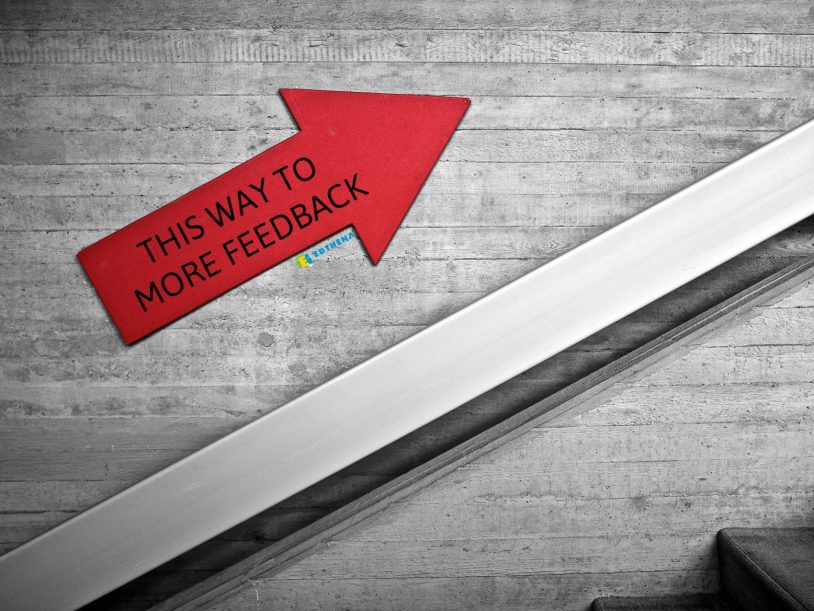Want Easier Principal Walkthroughs? Try Virtual Classroom Walkthroughs

Principal walkthroughs are a strategy often used by school leaders and team leaders to sample instruction across multiple classroom environments. During Covid-19, it might not be possible to go in person.
But even before Covid-19 upended our PD routines, organizing a walkthrough required the observer to block out an amount of time to see all classrooms in one go. Sometimes, that’s just not easy to make happen given the constant demands of a school.
Education researchers Laureen Cervone Avery and Patricia Martinez-Miller (2007) describe classroom walkthroughs as a tool that should “drive a cycle of continuous improvement by focusing on the effects of instruction.” Classroom walkthroughs are typically brief but frequent and consistent of a five-minute pop in from a principal. They have become increasingly popular as a means of informally observing teachers and classroom activities.
What is a virtual walkthrough?
In a Virtual Walkthrough, a school leader will be able to do their pop-in observations for all teachers with much more ease. Teachers upload a full-length lesson to Edthena, and then the observers focus on the segments they desire.
For example, curious what the first five minutes of distanced teaching is looking like across all math classrooms? Now you can find out.
Ultimately the person observing is able to identifying trends in teaching and learning across the set of classrooms. It’s also possible to provide accurate, personalized, and actionable feedback targeted to the teacher.
This strategy is similar to the style of observations conducted by school leaders when they pop into a classroom to observe teaching for a short duration of time. However, in a virtual capacity, the administrators will access the teachers’ instruction by watching uploaded segments of their lesson. By using a platform like Edthena, the administrator can annotate the segment of the video by leaving time-stamped comments and virtually collaborate with the teacher.
The benefits of virtual walkthroughs for school leaders
In-person walkthroughs are often a tool for the hurried school leader or instructional coach who is trying to increase coverage across teachers. But, at the end of the day, it still required the observer to visit the classroom physically. And when they visited, there would be no guarantee they could see the targeted aspect of teaching and learning. After all, the first five minutes of the math lesson usually happens at the same time for all elementary school classrooms in a certain grade.
With the change to distance teaching due to the pandemic, school leaders are simply unable to drop into a classroom.
Not only do virtual walkthroughs provide a space for administrators to view the instruction at their schools, but it affords them the flexibility to observe outside of the regular school day.
This idea that a virtual walkthrough provides flexibility for school leaders is highlighted by the fact they can happen both synchronously and asynchronously. School leaders technically still could “pop in” to a video conference that was recorded, and then leave feedback on the recording later for the teachers to reflect upon.
How do virtual walkthroughs impact instruction?
Virtual walkthroughs impact instruction by giving administrators a glimpse into the degree to which teachers are successfully implementing agreed-upon practices. Before a virtual walkthrough, an administrator should agree upon the indicators they are looking for that will define success. Becoming a great teacher is a process of developing skills across many years, so in a virtual walkthrough, a school leader should clearly delineate these look- and listen-fors.
By establishing a purpose and common rubric for these walk-throughs, school leaders will create a shared vision for high-quality instruction. By identifying the shared vision for good teaching, teachers should be able to determine what should happen next when they receive feedback. Ultimately, feedback will innately become actionable because teachers have already established the guidelines for what a successful classroom looks like.
The type of feedback that you can share during virtual principal walkthroughs
Teachers will be able to receive feedback on many aspects of instruction during a virtual walkthrough. From student engagement to explanations and representations of core content, to pedagogical strategies, implementation of curriculum, and student differentiation, an administrator has a myriad of options when it comes to actionable feedback. Each teacher could have a specific focus or purpose, and then the administrator could provide feedback that is personalized to that purpose.
Just as a principal popping into a live-classroom might focus on how the teacher is differentiating to meet each individual students’ needs, that same principal could view various 5-7 minute breakout sessions of a class to determine the type of student differentiation that is taking place. The administrator will focus on if the proper techniques are being employed to maximize student learning based on the skills of the students in each breakout session.
When analyzing a virtual walkthrough, a school leader could ask questions such as:
- How is this content scaffolded so that students are developing skills along the way?
- Was this content designed so that students at various cognitive levels could be engaged?
- What have you done to facilitate student-to-student discourse and collaboration?
The type of feedback that is provided after a pop in will end up being very similar to the type provide from a virtual walkthrough, and in most cases, will be able to be even more targeted since the administrator has an actual artifact of the instruction. Through the use of probing questions through online comments, the school leader will be able to engage the teachers about the exact support that they need.
Overall, the virtual walkthrough offers a manageable replacement to the pop-in during a distance teaching environment. Like any initiative, it will take planning to implement successfully. However, once the routines have been established, the amount of time needed to view and analyze footage will only depend on how many classrooms are being observed per week. In the end, this is a practice that will maintain a coaching community centered around personalized feedback.

